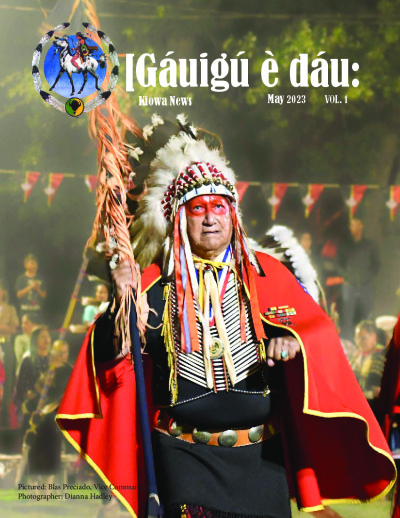
Embarking on a journey to explore the historical camp locations of the Kiowa Tribe, guided by the fragmented yet profound insights of historical maps, is not a typical travel experience. This is less about checking off landmarks and more about reading the land, understanding profound cultural narratives, and engaging with a history that is often unwritten in stone but deeply etched into the plains, rivers, and mountains of the American Southwest. This review delves into the unique challenges, rewards, and the sheer evocative power of seeking out these ancestral Kiowa sites.
The Maps as Our Guides: A Journey of Interpretation
The "maps" for this adventure are rarely precise, GPS-coordinated documents. Instead, they are a mosaic: early ethnographic surveys, military reconnaissance reports, oral histories painstakingly transcribed by anthropologists, and even the natural features themselves that served as timeless navigational markers for the Kiowa. These maps don’t offer exact addresses; they provide a framework, a historical trajectory of a nomadic people who moved with the seasons, following bison herds, seeking refuge, and gathering for ceremonies.
Interpreting these historical documents requires a blend of geographical literacy, historical knowledge, and a healthy dose of imagination. A dot on an 1850s map might represent a significant winter camp that housed hundreds, its exact footprint now lost to time and agriculture. A squiggly line might denote a seasonal migration route along a river, the very course of which has shifted over centuries. The value of these maps, however, is immense: they are the keys to unlocking a deeper connection to the Kiowa’s ancestral domain, revealing their strategic brilliance, their deep understanding of the environment, and their enduring resilience. They transform abstract history into tangible, geographical movements.

The Landscape of Memory: Regions of Kiowa Presence
The historical territory of the Kiowa Tribe primarily encompasses the Southern Plains, stretching across what is now Oklahoma, Texas, Kansas, and parts of Colorado and New Mexico. This vast, often stark, landscape was their home, their larder, and their spiritual sanctuary.
- The Wichita Mountains (Southwest Oklahoma): Arguably the most iconic and accessible region for understanding Kiowa history. These ancient, granite-domed mountains rise abruptly from the plains, offering dramatic scenery and a sense of timelessness. For the Kiowa, the Wichitas were a sacred landscape, a place of refuge during harsh winters, and a vital source of resources. The peaks, like Mount Scott and Rainy Mountain, hold deep spiritual significance, woven into Kiowa origin stories and ceremonial practices.
- The Red River and Canadian River Valleys: These river systems were vital arteries of Kiowa life, providing water, timber, and fertile ground for seasonal camps. Following their courses, even on modern maps, allows one to trace the historical movements of the Kiowa as they moved between hunting grounds and winter settlements. These riverine landscapes often reveal subtle archaeological indicators, though public access is frequently restricted.
- The High Plains (Texas Panhandle, Western Oklahoma, Eastern New Mexico): This vast expanse of grasslands was the primary hunting ground for bison, the lifeblood of the Kiowa. The sheer scale of these plains evokes the immense herds that once roamed here and the sophisticated hunting techniques of the Kiowa. Sites like the Antelope Hills, straddling the Oklahoma-Texas border, served as prominent landmarks and strategic locations for both hunting and defense.
.jpg)
The Experience of Engagement: Beyond the Tourist Trail

Visiting Kiowa historical camp locations is not like visiting a national park with marked trails and interpretive signs. Many sites are on private land, tribal land, or in remote, undeveloped areas. This requires a different approach: respect for private property, seeking permission where necessary, and often, an acceptance that the "site" itself is the landscape – the rolling hills, the river bend, the distant mountain peak – rather than a specific structure or ruin.
The reward, however, is profound. Standing in a landscape known to have been a major Kiowa winter camp, or a sacred ceremonial ground, evokes a powerful sense of presence. You’re not just learning history; you’re feeling it. The wind that whispers across the plains today is the same wind that carried the sounds of Kiowa camps centuries ago. The granite outcrops of the Wichitas stand as silent witnesses to countless generations. This journey is an exercise in historical empathy, a quiet contemplation of human resilience, cultural adaptation, and the enduring connection between people and place.
Illustrative Sites and Their Significance:
- Wichita Mountains Wildlife Refuge (Oklahoma): This federal refuge offers the most accessible and arguably the most impactful experience for those seeking Kiowa historical connections. While there are no specific "Kiowa Camp" signs, the entire refuge is steeped in their history. Driving through its rugged beauty, spotting bison herds, and hiking its trails, one can easily visualize the Kiowa living off this land. The refuge’s established trails lead to stunning vistas that offer the same strategic views Kiowa scouts would have utilized. The visitor center provides broader ecological information, but the historical narrative requires independent research and imaginative engagement. It’s a place where the landscape itself tells the story of refuge, sustenance, and spiritual depth.
- Rainy Mountain (Kiowa County, Oklahoma): Located near the town of Mountain View, Rainy Mountain holds immense spiritual significance for the Kiowa. It is often considered their place of emergence and is central to their cosmology. While direct public access to the mountain itself might be limited due to its sacred status and tribal ownership, its presence dominates the local landscape and can be viewed respectfully from nearby roads. To understand Rainy Mountain is to understand the Kiowa worldview – their origin, their connection to the earth, and the sacredness of specific geographical features. A visit to the nearby Kiowa Tribal Museum or engaging with Kiowa cultural resources can provide essential context for appreciating this site’s profound meaning.
- Antelope Hills (Roger Mills County, Oklahoma & Hemphill County, Texas): These distinctive red sandstone formations rise from the plains along the Canadian River, forming a significant landmark that features prominently in historical accounts of the Kiowa and other Plains tribes. Historically, they served as key navigational points, favored hunting grounds, and strategic locations. Today, access to specific hills can be challenging as much of the land is private. However, traversing the region and viewing the hills from a distance provides a powerful sense of the vastness of the plains and the significance of these natural features as territorial markers and gathering places. It’s a landscape that speaks of nomadic life, the thrill of the hunt, and the challenges of frontier encounters.
- Adobe Walls (Hutchinson County, Texas Panhandle): This site, while more widely known for two significant battles (1864 and 1874) involving Kiowa, Comanche, and Cheyenne warriors against American forces and buffalo hunters, is crucial for understanding a pivotal period in Kiowa history. It represents the fierce struggle to maintain their way of life and ancestral lands. While a historical marker and a small memorial stand today, the landscape itself—vast, open, and wind-swept—allows for reflection on the profound clashes that occurred here. It’s a stark reminder of the end of an era for the Plains tribes and the bravery with which they defended their territory.

The Indispensable Role of Indigenous Knowledge:
A truly meaningful exploration of Kiowa historical camp locations cannot be undertaken without acknowledging and seeking out Kiowa perspectives. Tribal cultural centers, museums dedicated to Kiowa history (such as the Kiowa Tribal Museum in Carnegie, Oklahoma), and academic resources developed in collaboration with the tribe are invaluable. Oral histories, passed down through generations, offer insights and nuances that no colonial map or military report can provide. Engaging with these resources transforms the journey from a purely historical pursuit into a culturally informed, respectful, and deeply enriching experience. It underscores that these are not just historical sites but places of living heritage and ongoing significance for the Kiowa people.
Why Travel This Way? A Review of the Experience
This unconventional mode of travel, focused on historical camp locations and maps, offers a profound alternative to mainstream tourism. It’s not about luxury hotels or curated experiences, but about:
- Deep Immersion: It forces you to slow down, research, interpret, and connect with the land on a much deeper level.
- Unique Historical Perspective: It challenges conventional narratives of American history by placing Indigenous voices and experiences at the forefront. It highlights the sophistication, resilience, and profound connection to land that characterized the Kiowa people.
- Fostering Respect and Understanding: It cultivates a greater appreciation for Indigenous cultures, their enduring legacy, and the ongoing importance of their ancestral lands. It’s a powerful lesson in environmental stewardship and cultural continuity.
- Personal Discovery: The quiet contemplation offered by these remote landscapes, combined with the intellectual challenge of historical interpretation, can lead to significant personal reflection and a broadened worldview.
- The Challenge and Reward: The difficulty in pinpointing exact sites, the need for extensive research, and the reliance on imagination are part of the adventure. The reward is an unparalleled sense of connection to a vibrant past and a living culture.
Conclusion:
Reviewing the experience of exploring Kiowa Tribe historical camp locations through maps is to review a journey of profound discovery. It is a call to move beyond surface-level tourism and engage with history as it lives in the land. It demands respect, research, and an open heart. The "maps," whether drawn on paper or etched in memory and landscape, serve not just as guides to past locations, but as conduits to understanding the enduring spirit of the Kiowa people and their unbreakable bond with their ancestral lands. This journey is less about finding a destination and more about understanding the epic journey of a people, a journey that continues to resonate across the vast and beautiful Southern Plains.
